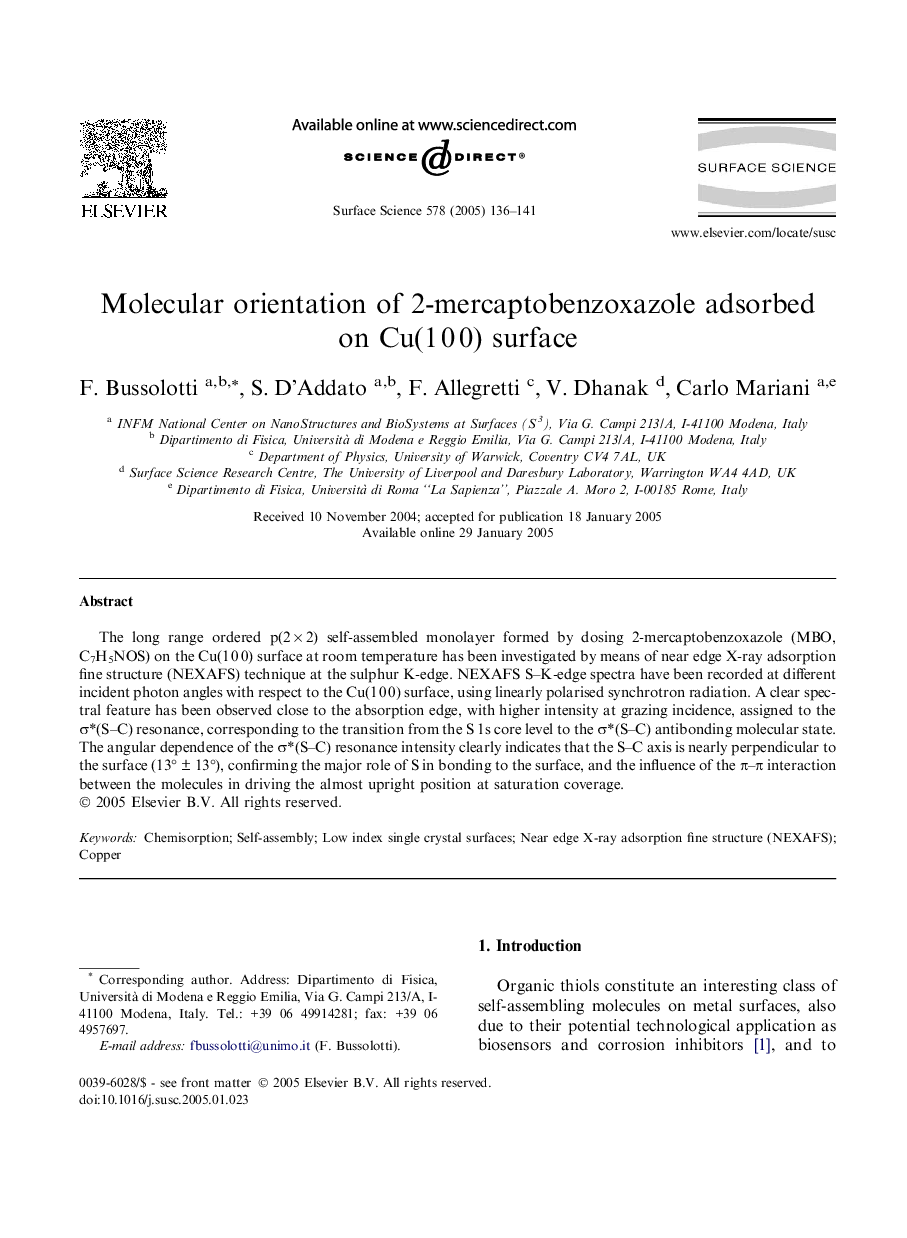| Article ID | Journal | Published Year | Pages | File Type |
|---|---|---|---|---|
| 9595699 | Surface Science | 2005 | 6 Pages |
Abstract
The long range ordered p(2 Ã 2) self-assembled monolayer formed by dosing 2-mercaptobenzoxazole (MBO, C7H5NOS) on the Cu(1 0 0) surface at room temperature has been investigated by means of near edge X-ray adsorption fine structure (NEXAFS) technique at the sulphur K-edge. NEXAFS S-K-edge spectra have been recorded at different incident photon angles with respect to the Cu(1 0 0) surface, using linearly polarised synchrotron radiation. A clear spectral feature has been observed close to the absorption edge, with higher intensity at grazing incidence, assigned to the Ï*(S-C) resonance, corresponding to the transition from the S 1s core level to the Ï*(S-C) antibonding molecular state. The angular dependence of the Ï*(S-C) resonance intensity clearly indicates that the S-C axis is nearly perpendicular to the surface (13° ± 13°), confirming the major role of S in bonding to the surface, and the influence of the Ï-Ï interaction between the molecules in driving the almost upright position at saturation coverage.
Related Topics
Physical Sciences and Engineering
Chemistry
Physical and Theoretical Chemistry
Authors
F. Bussolotti, S. D'Addato, F. Allegretti, V. Dhanak, Carlo Mariani,
